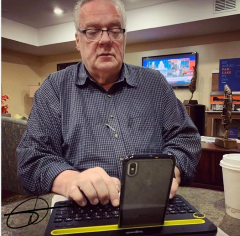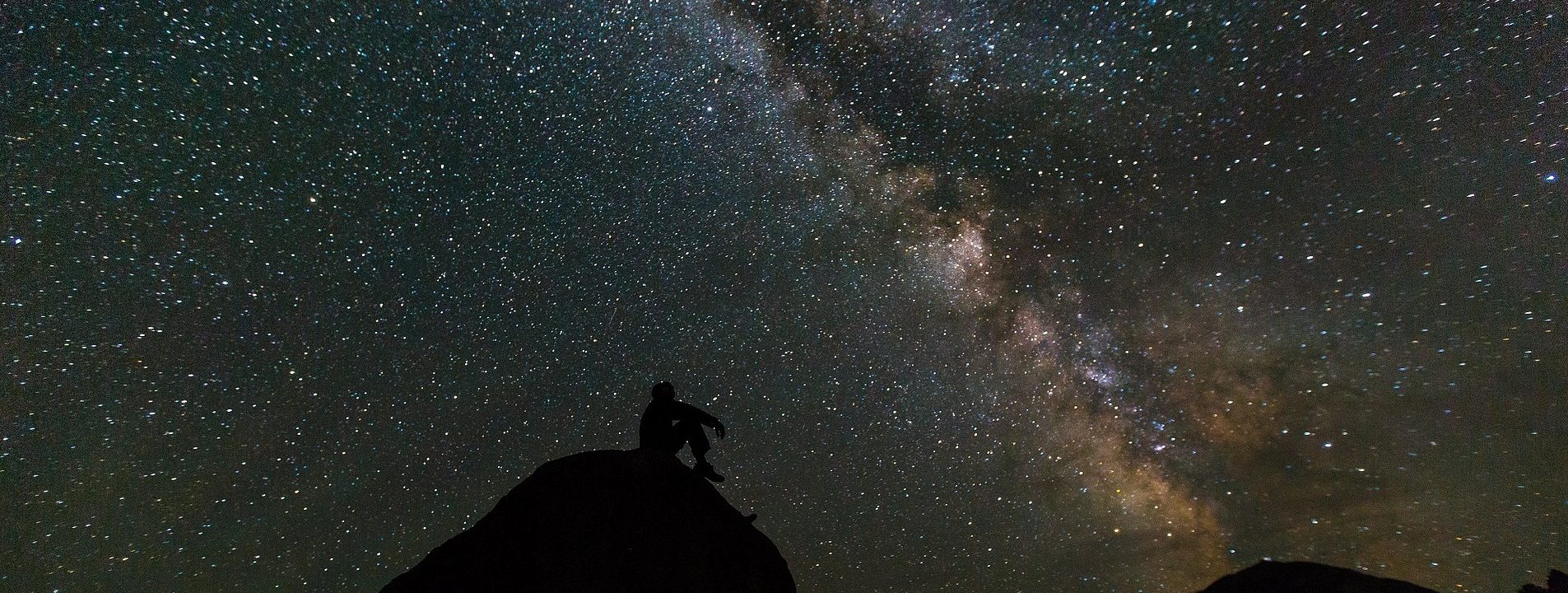When I was in the 8th grade, my science teacher (Mr. Doolittle) asked us to do an experiment. With the permission of our parents, of course, we were to take a small box upon the roof of the house. With one end of the box cut away, lay down on the roof with our head in the box, and lay there as long as possible looking at the stars. The sides of the box would hopefully block the peripheral view of trees and poles and power lines. This should give us a direct focused view of the night sky.
Then Mr. Doolittle said, “Just let your mind roam.”
Do not try and force your thoughts one way or another. Just roam. Just imagine. Where will your thoughts lead you? What will you imagine? What will your brain come up with, considering you have a great imagination?
I grew up around the early Space Program in Seabrook, TX, and enjoyed school and neighboring experience with the kids of astronauts, engineers and other workers of the Space Program. Since we lived close to NASA, it was a very natural thing for me to enjoy thinking about space.
This experiment had been just a few years prior to the TV show Star Trek. Remember the opening sequence?
Space
The final frontier.
These are the voyages of the Starship Enterprise.
Its five-year mission:
to explore strange new worlds,
to seek out new life and new civilizations,
to boldly go where no man has gone before.
I do not remember all the deep thoughts I must have had that night, up on that roof, but I do remember imagining the immensity of space.
How big is space? How far does it go? If it does end, what’s out beyond the end?
Imagine a shepherd boy, somewhere in a desert in what we call the Middle East, sitting at night, guarding his sheep, and looking deep into the nighttime skies. He could easily pen these words as he thought about his creator.
When I consider Your heavens, the work of Your fingers, The moon and the stars, which You have ordained, What is man that You are mindful of him, And the son of man that You visit him? (Psalms 8:3-4 NKJV)
Calvin and Hobbes, though not in production for a long time, is a favorite cartoon strip and in one episode there is a picture of Calvin staring at the same kind of nighttime experience that the psalmist and I had already done and acknowledging his insignificant speck of existence in light of the star-flung sky.

For just a moment,
imagine what you cannot really know,
and think about what you will never see.
How do you handle the big unknown?
How can I imagine all of that and not believe somebody must have created it. I’ve believed all my life in a supreme creator, you know, he spoke it into existence and from nothing the end result is a great something.
It’s not an accident that I sit at my computer, thinking with a brain that is of the highest order of living things, working in a frame of existence that is constantly changing and improving on many fronts. There is no way I began in a primordial swamp and evolved into who I am today.
I am not an accident. It did not take a gazillion years to come up with all of the life that surrounds me.
We talk about dimensions of things that we measure by height, breadth, depth, length, circumference, volume, measurement…
What we often fail to realize is the dimension of time. Time will be the ultimate storyteller of the dimensions of God.
What we often fail to comprehend is the dimension of our mind that can plumb the depths of what we cannot see, speculate on what we cannot know, and attempt to describe with words that cannot possibly describe the great unknown, and make quantum leaps of logic to find answers.
Too many people are frightened of the depth of dimensions it takes to plumb the great unknown. Just this morning my hard drive finally struggled with having no room left to store new files. I mean, a terabyte is not enough! Don’t you remember the early days of computing when you finally got a 5-megabyte hard drive and were happy to quit using a few floppy drives! My new iPad has 512 megabytes of storage, and I’m not sure that will be enough.
Yet, the neurons of our brain combine so that each neuron helps each other to store many memories at a time, exponentially increasing the brain’s memory storage capacity to something closer to around 2.5 petabytes (or a million gigabytes)!
What a massive storage compacity! What a great reservoir of data and processing power to crunch the unknown and hope to acquire an answer. With impressive brain power, Watson like computing power, and the constant technology shift that lets us know more about what we never thought possible, well, let’s just say our dimensions of understanding are expanding.
You must keep your mind fresh, filled up with knowledge and wonderment, open to the possibilities as new knowledge is added, yet grounded on your foundation. Jesus said build your house on the foundation of an immovable rock. (Matthew 7:24-26) That foundation comes from others building long before we were here, but the foundation of all things is my belief in God who made the heavens and earth (Genesis 1:1) and built it all (Hebrews 3:4).
Our dimensions are often grasped by our senses. See. Taste. Touch. Smell. Hear. Are we limited by these senses? Perhaps. But dimensional thinking, geospatial comprehension, and perceiving what we cannot possibly grasp, our brain makes quantum leaps of logic, and someday the answers we uncover will be proved right, or not.
Imagine the old story of a number of blind men all touching an elephant at a different location. Snout. Legs. Ears. Tusk. Broadside. Each has just a small understanding of the whole. Blind, they can only describe what they can perceive with the sense of touch. Conceptually, they describe the results. The trunk? A thick snake. The ear? A great fan. The legs? A pillar-like tree-trunk. Broadside? A wall. The tail? A rope. Tusk? A spear. With limited language, they describe their results. But think. Expand their ability by giving them sight, then they can better describe the results.
This is how I look at these dimensional views. I do not have the foundation to describe what I cannot know, and what I cannot see, but somewhere in the future, more knowledge will help us to comprehend the answers above.
How big is space? How far does it go? If it does end, what’s out beyond the end?

